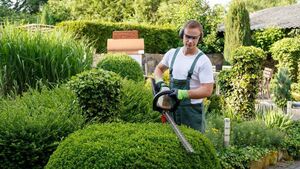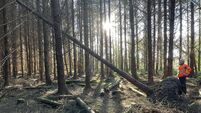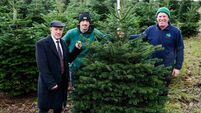Green Fingers: Getting into shape

If left to nature and uncut, stronger growing plants will outgrow and kill the weaker plants until, in time, only a dominant tree is left.
Gardens are an artificial man made area in one form or other, usually designed to suit the individual owner’s needs. Most gardens are created with a little knowledge and quite often by trial and error but none of this is important as long as the homeowner is happy with the way it progresses.
All gardens need some management otherwise they become unkempt and generally neglected. Even gardens with no plants get tired looking and need maintenance and parts replaced or repaired at some stage.
Gardens with plants will need pruning and trimming to keep within the space you have for them, otherwise if left to nature and uncut, the stronger growing plants will outgrow and kill the weaker plants until, in time, only a dominant tree is left in its place.
Trimming could be classified as light pruning where you are shaping up plants, and making them look neat. Pruning is for more strong plant reduction, especially where you want to get a plant back into the size you require.
Very often around this time of year we get elongated growth from trees and shrubs and these plants need to be reduced back to about 10-15cm (4-6”) of the new growth of larger growing types, to much less with smaller growing plants.
If you miss a few years you might have to go back to a few years' growth to bring the plant back into shape. We go for pruning first and then take a look at our results and then trim to tidy up individual plants.
The general rule is that you prune just after a plant has flowered and that is sensible advice, as then the plant has time to grow again to produce flowering stems for the following year.
Therefore, at this stage all the spring flowering shrubs should have been pruned already but that may not be the case and you can still do some now but you might not get many flowers next year.
Removing long whippy growth and excessive growth around this time of year from a large variety of plants is certainly advisable and some specific advice on climbers is given below.
The spring flowering Clematis montana with its pink flowers is a common sight but the plant if left unpruned will become a tangled mess in time. It can take strong pruning and it will soon recover and produce new shoots but because it is now later in the year you will not get the mass of showy flowers next year.
The pruning of wisteria sometimes creates confusion and it will flower even if not pruned but tie in any long shoots you wish and remove all the remaining ones you do not want now. The large flowering Clematis in full bloom now are pruned down to 30cm (1’) from the base in late February. We tie in climbing and rambling rose shoots all summer and any not needed are removed as they appear.
We are coming into a suitable period for setting new lawns and repairing older ones that have bare patches. Do not wait but start the preparation now and sow straightaway afterwards but do not water the area as this will lead to bare patches and uneven germination. Just let nature takes its course and germination will inevitably take place when conditions are right.
If you deadhead your summer flowers you will encourage a last gasp of flowers into the autumn.
If you have any queries or comments you are welcome to share them with me on 051-384273 or orchardstowngardencentre@hotmail.com and if of general interest I will include it in a future article.






